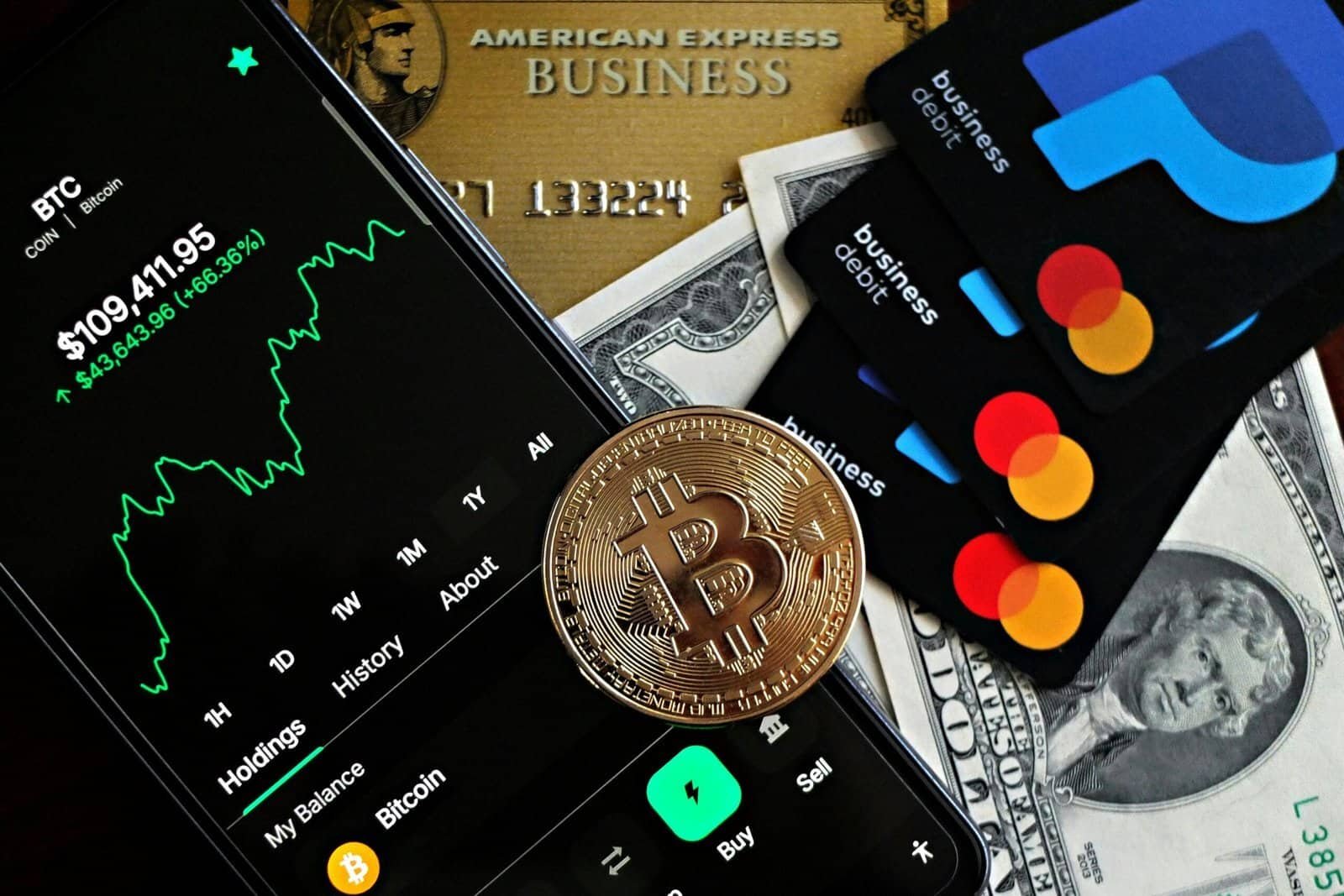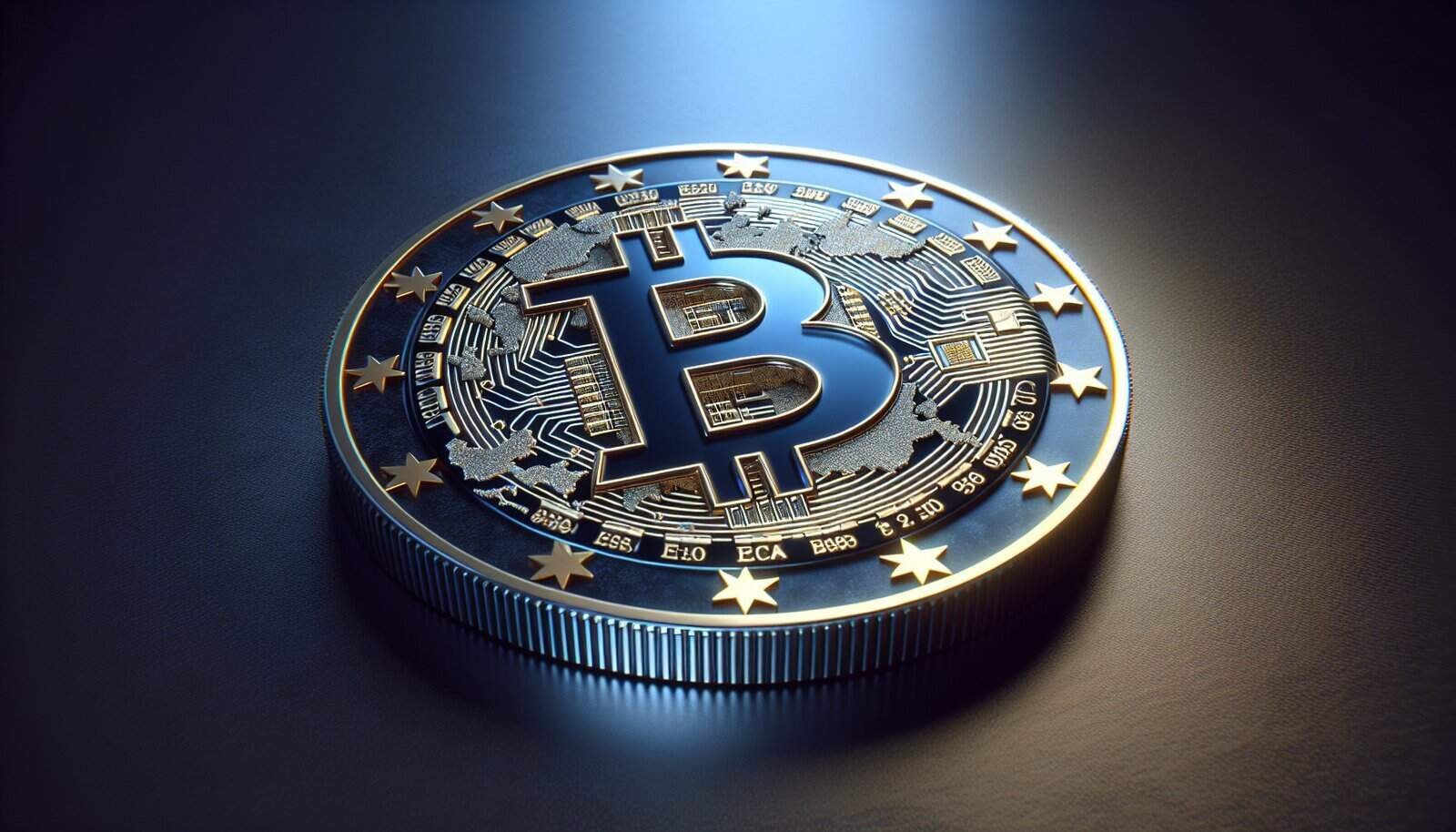Are you trying to figure out which European crypto exchanges will serve you best in 2025?
What Are The Top European Crypto Exchanges In 2025?
You want a clear, practical guide that helps you decide which exchange to use in 2025. This article breaks down the top European-facing platforms, explains the criteria that matter most, compares key features, and gives actionable advice so you can pick an exchange that fits your needs—whether you’re trading occasionally, staking to earn yield, or managing institutional-size positions.
How Europe’s crypto landscape changed by 2025
Regulation, infrastructure, and user expectations all evolved rapidly between 2020 and 2025. The Markets in Crypto-Assets (MiCA) framework reached maturity in the EU, bringing standardized rules for asset classification, stablecoins, and service provider obligations. At the same time, anti-money-laundering (AML) and know-your-customer (KYC) requirements tightened across member states, making transparent, compliant exchanges the safer choice for most users.
You’ll find that exchanges emphasizing compliance, custody best practices, and clear fiat onramps became more prominent. Liquidity also consolidated around a smaller group of reputable platforms, while new services—safer staking, regulated derivatives, custody for institutions, and easier fiat payments—became expected features.

Criteria used to rank exchanges
You should evaluate exchanges against consistent criteria so you can compare them reliably. Below are the primary factors used in this review:
- Regulation and licensing: Does the exchange operate under EU rules or have local licenses?
- Security: What custody models, audits, and insurance policies are in place?
- Fees: Trading fees, deposit/withdrawal costs, and spread.
- Fiat onramps: Supported fiat currencies and payment methods.
- Liquidity and order types: Market depth, limit/market/stop orders, advanced features.
- Supported assets and token listings: Number and quality of assets, listing standards.
- User experience: App/website design, onboarding speed, verification time.
- Additional services: Staking, savings, lending, derivatives, and institutional tools.
- Customer support: Response times and quality of help channels.
- Transparency and corporate governance: Audit reports, proof-of-reserves, public disclosures.
You’ll notice that what matters most depends on your goals: low fees and high liquidity for active traders, strong custody and compliance for institutional users, or simple UX and fiat support for beginners.
Top European crypto exchanges in 2025 — quick comparison
Below is an at-a-glance table so you can compare core attributes quickly. Fees are indicative and can vary based on volume, promotions, or regional differences.
| Exchange | Headquarters / Key EU Entity | MiCA/Regulatory Status | Fiat Currencies | Typical Maker/Taker Fees | Security Highlights | Best for |
|---|---|---|---|---|---|---|
| Bitstamp | Luxembourg | EU-regulated, long-standing compliance | EUR, USD, GBP | 0.00–0.50% (volume tiers) | Cold storage, SOC audits, insurance | Trusted fiat onramp, beginners & intermediates |
| Kraken | US-based with EU operations | Complies with EU rules for EU customers | EUR, GBP, USD | 0.00–0.26% | Advanced security, proof-of-reserves, staking | Security-conscious traders & institutions |
| Coinbase (EU) | Ireland | EU-registered subsidiary, MiCA-compliant | EUR, GBP, USD | 0.00–0.50% (varies by product) | Custody, insurance, strict compliance | Institutional custody & retail onboarding |
| Bitpanda | Austria | EU-regulated | EUR, GBP, CHF | 0.00–0.4% (depending on product) | Custody, AML/KYC, payment partnerships | European fiat users, simple UX |
| Bitvavo | Netherlands | MiCA-aligned, local compliance | EUR, GBP | 0.00–0.25% | Cold storage, Dutch banking partnerships | Low-fee Euro trading for residents |
| eToro | Cyprus (EU entity) | Regulated as investment firm, crypto services | EUR, GBP, USD | Spread-based; variable | Segregated accounts, regulatory oversight | Social trading & copy trading |
| Luno | UK/EU presence | Compliant for EU/UK markets | EUR, GBP | 0.10–0.75% (varies) | Insurance, basic custody | Simple mobile-first trading |
| Coinfloor | UK | Focused on regulated custody for BTC | GBP, EUR support | Variable OTC/volume fees | Institutional custody, proof-of-reserves | Bitcoin-focused investors & institutions |
Note: Fee ranges are approximate. Always check the exchange’s official fee schedule and recent regulatory disclosures before joining.

Bitstamp — a reliable fiat gateway
Bitstamp has been one of Europe’s oldest exchanges and has focused on being a dependable fiat onramp. You’ll find straightforward EUR and USD support, a simple fee schedule that rewards volume, and a no-nonsense trading interface.
- Regulation and compliance: Bitstamp operates with EU regulatory oversight and has maintained consistent compliance standards over many years.
- Security: It uses multi-signature cold storage, has undergone third-party audits, and publishes transparency reports.
- Fees and liquidity: Fees reduce with higher volume, and liquidity for major pairs (BTC/EUR, ETH/EUR) is generally strong.
- Who it’s for: You should consider Bitstamp if you value stability, clear fiat transfers, and a trusted reputation.
Bitstamp tends to favor conservative listing policies, so if you want access to niche altcoins you may need another exchange in addition.
Kraken — security-first trading and advanced products
Kraken has built a reputation for security and comprehensive service offerings that appeal to serious traders and institutions. Even though Kraken is US-origin, it runs EU-focused services and complies with local requirements.
- Regulation and compliance: Kraken operates EU-oriented services and has aligned with regional rules post-MiCA rollout.
- Security features: Strong custodial controls, hardware security modules (HSMs), proven incident response plans, and periodic proof-of-reserves exercises.
- Product range: Spot trading, staking, margin and futures (depending on jurisdiction), OTC desk, and institutional custody.
- Fees: Competitive fee tiers that reward volume; staking and yield features may carry additional terms.
- Who it’s for: You should pick Kraken if you want a security-first exchange with deep liquidity, advanced order types, and institutional-grade services.
Kraken’s interface and product complexity can be overwhelming for absolute beginners, but it’s excellent as you grow.

Coinbase (EU) — regulatory-first with strong custody
Coinbase made itself a household name through friendly UX and regulatory engagement. Its EU arm focuses on retail onboarding and institutional custody for European clients.
- Regulation and compliance: Coinbase’s EU entity adheres to MiCA and local standards, and prioritizes transparency.
- Security: Cold custody for many assets, insured policies for custodial holdings, and publicly audited processes.
- Services: Retail trading app, Coinbase Pro-style advanced trading (in EU markets), Coinbase Prime for institutions, staking, and compliance tools.
- Fees: Retail spreads and fees apply; Pro-style fees are lower for active traders.
- Who it’s for: You should use Coinbase if you want simple onboarding, strong regulatory assurances, and easy access to on-chain staking for supported tokens.
Coinbase is often more expensive than some European-native competitors for active trading, but it compensates with high UX quality and trust.
Bitpanda — a European-first user experience
Bitpanda started in Austria and focused on making crypto accessible to European users. It offers a broad product suite beyond trading, targeting Euro-based customers.
- Regulation and compliance: Fully aligned with EU rules and local licensing; integrated with European payments.
- User experience: Clean mobile and web apps, fast fiat deposits (SEPA), and simple purchasing options for beginners.
- Product variety: Crypto trading, investments, savings products, commodity baskets, and tokenized assets.
- Fees: Competitive but can be higher for instant buy/sell convenience; volume discounts apply in some cases.
- Who it’s for: Choose Bitpanda if you want a friendly European app with broad asset choices and easy SEPA funding.
Bitpanda emphasizes product breadth and UX rather than being the absolute lowest-cost venue for high-frequency traders.

Bitvavo — low-fee Euro-native exchange
Bitvavo, based in the Netherlands, emphasizes competitive fees for Euro traders and is popular with residents in the EU.
- Regulation and compliance: Aligns with MiCA and Dutch regulatory expectations; cooperative with local banks.
- Fees: Low maker/taker fees that scale down with volume; appeals to cost-conscious traders.
- Fiat onramps: Fast SEPA deposits and withdrawals for EUR users.
- Security: Cold storage, audits, and standard custody safeguards.
- Who it’s for: You should consider Bitvavo if you trade in EUR frequently and want low fees plus easy SEPA transfers.
Bitvavo’s asset coverage is broad enough for most retail needs but may not match institutional-grade derivatives offerings.
eToro — social trading and crypto access through an investment platform
eToro occupies a hybrid space between exchange and broker. You trade crypto through a regulated investment platform that offers social trading and copy strategies.
- Regulation and compliance: Operates under CySEC for EU services and complies with investment rules applicable to trading platforms.
- Model: For some products eToro acts as a broker with spreads rather than a pure exchange order book.
- Features: Social trading, copy-trading, crypto wallets, and integrated equity trading.
- Fees: Spread-based pricing can be higher than order-book exchanges for some pairs; check specific spread tables.
- Who it’s for: Pick eToro if you value social features, want to mirror other traders, or want a single app for stocks and crypto.
eToro’s combination of investment and crypto services suits those who prefer a unified trading environment rather than managing multiple accounts.

Luno — mobile-first for European and international users
Luno targets users who prefer a mobile-first, simple approach to buying and holding crypto. It historically served emerging markets but has built EU and UK capabilities.
- Regulation and compliance: Luno has structured operations to comply with EU and UK requirements for crypto service providers.
- UX: Very beginner-friendly mobile app with quick onboarding and SEPA support in Euro markets.
- Fees: Variable, often targeted at beginners with simple fee tiers.
- Who it’s for: You should choose Luno if you want a straightforward mobile app and aren’t focused on advanced trading features.
Luno’s simplicity trades off against advanced trading and derivatives for more experienced traders.
Coinfloor — veteran Bitcoin-focused platform for conservative investors
Coinfloor is a UK-based exchange that has carved a niche as a regulated, Bitcoin-focused platform emphasizing transparency for higher-volume and institutional customers.
- Focus: Primarily Bitcoin, with custody and OTC services tailored for institutions and serious investors.
- Regulation and compliance: Robust KYC/AML procedures and institutional custody offerings.
- Security: High-grade custody, proof-of-reserves initiatives, and institutional custody policies.
- Who it’s for: You should use Coinfloor if you’re Bitcoin-centric and want a conservative, transparent platform for larger trades and custody.
Coinfloor’s narrow focus makes it less suitable if you want access to a wide basket of altcoins.
Binance and other global platforms — EU services and regulatory nuance
Although Binance is a global leader in liquidity and listed assets, by 2025 you should evaluate its EU presence carefully. Binance has created local entities and made regulatory adjustments, but local rules mean features, derivatives access, and onboarding differ by country.
- Liquidity and assets: Often the widest selection and deepest liquidity.
- Regulatory nuance: Availability of features and access depends on your jurisdiction. Some EU countries restrict certain products (e.g., margin/derivatives).
- Who it’s for: You should consider Binance if you prioritize asset variety and liquidity, but confirm local legal availability and compliance before transacting.
Other global platforms (Crypto.com, OKX, Huobi) similarly offer large asset sets but may operate under varying EU compliance structures. Verify the local legal and licensing status before using them for Euro fiat transfers.
Feature-by-feature comparisons
Below is a more detailed table comparing features that often drive your decision beyond just fees.
| Feature | Bitstamp | Kraken | Coinbase (EU) | Bitpanda | Bitvavo | eToro | Luno | Coinfloor |
|---|---|---|---|---|---|---|---|---|
| Fiat SEPA support | Yes | Yes | Yes | Yes | Yes | Yes | Yes | Yes |
| EUR trading pairs | Strong | Strong | Strong | Strong | Strong | Moderate | Moderate | BTC-centric |
| Staking & yield | Limited | Yes | Yes | Yes | Limited | Yes (via platform) | Limited | No |
| Derivatives | Limited | Yes (jurisdictional) | Some products | No | No | No | No | No |
| Institutional custody | Yes | Yes | Yes | Yes | Limited | Yes | Limited | Yes |
| Proof-of-reserves | Publicly disclosed | Regular exercises | Disclosures | Disclosures | Partial | Partial | Partial | Public for BTC |
| Mobile app | Yes | Yes | Yes | Yes | Yes | Yes | Yes | Limited |
| OTC desk | Yes | Yes | Yes | Yes | Yes | Yes | Yes | Yes |
| Customer support | Email/Live | Email/Live | Extensive | Live chat | Live chat | Live chat | Dedicated institutional |
You’ll see that no single exchange is perfect for every use case. Consider mixing providers—one for low-fee trading, another for custody and staking, and a third for specialist services.
Fees and cost examples
Fees are a common deciding factor. Below are examples to help you visualize cost differences; actual fees change frequently and depend on volume, region, and payment method.
Example: Trading 0.5 BTC from EUR to BTC on a retail platform
- Bitstamp: Maker 0.25% / Taker 0.25% (example)
- Bitvavo: Maker 0.10% / Taker 0.25%
- Coinbase: Retail spreads + fee; Pro tier could be 0.50%/0.20% tiers depending on liquidity
Example: SEPA deposit
- Many EU exchanges: Free or minimal fees for standard SEPA; instant SEPA may have a small fee.
You should always calculate total cost including spread, trading fee, and deposit/withdrawal fees. If you move funds frequently, those transfer fees add up.
KYC, privacy, and verification timelines
After MiCA and tightened AML standards, most European exchanges require verified accounts to access fiat onramps and full trading functionality. Typical verification steps you’ll encounter:
- Basic account creation: email and password.
- Identity verification: government ID, selfie, proof of address.
- Enhanced due diligence: source-of-funds checks for higher limits or institutional accounts.
Verification can take from minutes (with instant verification providers) to several business days for manual checks. If you plan to move larger amounts, start verification early to avoid delays.
Security best practices you should use
Even the best exchange can face threats. Protect your funds with these practices:
- Use strong, unique passwords and a reputable password manager.
- Enable two-factor authentication (2FA) using an authenticator app (not SMS).
- Use hardware wallets for long-term holdings and large amounts; use exchange custody only for trading or temporary holdings.
- Keep withdrawal whitelist addresses on exchanges when available.
- Monitor account activity and set up email/SMS notifications.
- Use separate accounts for trading and long-term storage when possible.
You should treat exchange custody as a convenience for active funds, not a substitute for private custody of long-term holdings.
How to choose the right exchange for you
Pick an exchange based on your primary use case and priorities:
- If you prioritize fiat onramps and simple Euro transfers: Bitstamp, Bitpanda, Bitvavo.
- If you want strong security and institutional services: Kraken, Coinbase, Coinfloor.
- If you want social or multi-asset investing in a single app: eToro.
- If you want the lowest fees for Euro trading: Bitvavo and similar Euro-native exchanges.
- If you want the widest asset selection and liquidity: Binance (but check local compliance first).
You should also factor in customer support responsiveness, available payment rails in your country, and whether you need derivatives or staking.
Practical onboarding checklist you should follow
Before you start trading, follow this quick checklist:
- Verify jurisdictional availability: Confirm the exchange fully supports your country and payment method.
- Complete KYC early: Upload documents and allow time for verification.
- Set up 2FA: Use an authenticator and save recovery codes securely.
- Start with small deposits: Test the deposit and withdrawal path before moving large funds.
- Check fee structure: Understand maker/taker fees and deposit/withdrawal costs.
- Consider custody: Move long-term holdings to hardware wallets or regulated custody solutions.
- Read the terms: Know the withdrawal limits, lock-up for staking, and fee change policies.
This helps you avoid surprises and minimizes friction when you later scale up trading.
Emerging trends in 2025 you should watch
Several trends in 2025 are shaping how exchanges operate and what you should expect:
- MiCA-driven standardization: Expect more transparent disclosures, clearer stablecoin frameworks, and harmonized rules across the EU.
- Tokenized assets & regulated token markets: More fiat and tokenized securities may appear on regulated exchanges.
- Interoperability and cross-chain settlement: Exchanges will offer better cross-chain trading tools and bridges to reduce friction.
- Institutional custody parity: Institutions will demand the same custody guarantees offered for traditional assets—audited custody, insurance, and real-time reporting.
- Embedded finance: More platforms will integrate crypto buy/sell functions into banking and payment apps for smoother fiat flows.
You should monitor announcements from exchanges about MiCA compliance, proof-of-reserves publications, and custody certifications.
Common mistakes you should avoid
Avoid these frequent mistakes that lead to avoidable losses and frustrations:
- Not confirming local regulatory availability before sending fiat.
- Leaving large balances on exchanges long-term.
- Using SMS-based 2FA instead of an authenticator or hardware-based keys.
- Ignoring customer support reviews and platform uptime history.
- Confusing low headline fees with total cost (spreads, deposit fees, and slippage matter).
A little diligence on the front end saves you time and risk later.
Final recommendations — which exchange to pick?
Your best choice depends on your priorities. Use these practical pairings:
- Beginner focused on EUR onramp and easy UX: Bitpanda or Bitstamp.
- Fee-sensitive Euro trader: Bitvavo for low maker/taker fees and SEPA support.
- Security-first trader or institution: Kraken or Coinbase (EU) for custody and compliance.
- Social investor and multi-asset strategy: eToro for copy trading and combined stock/crypto exposure.
- Bitcoin-centric institutional investor: Coinfloor for focused liquidity and custody.
You might also use a two-exchange strategy: one for low-cost trading and another for secure custody and staking. This hybrid approach helps you get the best of both worlds.
How to stay updated and safe
Because the crypto landscape changes fast, maintain these habits:
- Subscribe to official exchange announcements and regulatory updates.
- Follow trusted industry analysts and official statements from your exchange.
- Keep a calendar reminder to review exchange terms and fee schedules every few months.
- Maintain audited records of large transactions for tax and compliance purposes.
Staying informed helps you adapt quickly to regulatory changes and product improvements.
Closing thoughts
You’re operating in a rapidly maturing market in 2025. European exchanges have become more professional, regulated, and feature-rich. When you choose an exchange, balance convenience, cost, and security according to your goals. Use multiple platforms where it makes sense, keep long-term holdings in private custody, and treat regulatory disclosures and proof-of-reserves as important decision factors.
If you want, tell me which country you’re in and what you primarily want to do (buy-and-hold, active trading, staking, or institutional custody) and I’ll recommend 2–3 exchanges tailored to your situation.
